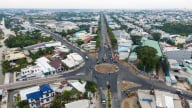National Focus
Vietnam’s local currency bond market posts positive growth through Covid-19
While Covid-19 drags on local currency bond markets in emerging East Asia, the market still got a positive increase.
Vietnam’s local currency bond market posted a healthy 9.5 per cent quarter-on-quarter growth in the first quarter of 2020, to reach $57.6 billion at the end of March, according to Asian Development Bank’s (ADB) Asia Bond Monitor.
This is mainly due to a strong growth rate of the government bond segment, growing 10.5 per cent quarter-on-quarter in the first quarter, to reach $53.3 billion and account for 92.6 per cent of the country’s total bond stock.
Corporate bonds, however, contracted 1.7 per cent quarter-on-quarter in the first quarter of the year to reach $4.2 billion at the end of March given the absence of new issuance over the review period.
In emerging East Asia, Covid-19 pandemic continues to drag on local currency bond markets as investment sentiment globally and in the region wane and containment measures limit economic activity. Emerging East Asia is comprised of China, Hong Kong, Indonesia, the Republic of Korea, Malaysia, the Philippines, Singapore, Thailand and Vietnam.
Government bond yields trended downwards in most regional markets between 28 February and 29 May this year, while equity markets in emerging East Asia suffered losses and local currencies depreciated against the USD.
Credit spreads have widened for nearly all markets in the region as investors took a risk-averse approach, with the share of foreign holdings in most of emerging East Asia’s local currency bond markets also declining.
Risks to the global outlook remain heavily tilted to the downside, mainly due to the uncertainty brought about by the Covid-19 pandemic, including the prospect of longer periods of minimal economic activity and further waves of outbreaks. Other risk factors include trade tensions between the China and the US, as well as financial volatility due to capital outflows from emerging markets.
“Governments and central banks in the region have taken significant measures to mitigate the impact of Covid-19 through fiscal stimulus packages and eased monetary policies. But more needs to be done to strengthen the region’s economies and financial markets,” said ADB Chief Economist Yasuyuki Sawada. “While overall investment sentiment is still down, there are signs of recovery in some economies as quarantine measures are strategically relaxed.”
According ADB, local currency bonds outstanding in emerging East Asia totaled $16.3 trillion at the end of March, up 4.2 per cent from December 2019 and 14 per cent higher than in March 2019.
Bond issuance in the region reached $1.7 trillion in the first quarter of 2020, up 19.7 per cent from the fourth quarter of 2019. Emerging East Asia’s local currency bonds outstanding as a share of gross domestic product rose to 87.8 per cent at the end of March.
Government bonds outstanding rose to $9.9 trillion at the end of March, while corporate bonds reached $6.4 trillion. China remains the largest bond market in emerging East Asia, accounting for 76.6 per cent of the total bond stock at the end of the first quarter of 2020.
Phu My Hung sold entire batch of $1.7-trillion corporate bonds to IFC
Resolution 68: A turning point in Vietnam's private sector policy
As Vietnam sets its sights on becoming a high-income country by 2045, Resolution 68 lays a crucial foundation. But turning vision into reality requires not only good policy - but also unwavering execution, mutual trust and national unity.
Vietnam plans upgrade of Gia Binh airport to dual-use international hub
Vietnam plans to upgrade Gia Binh Airport in Bac Ninh province into a dual-use international airport to support both military and civilian operations, the government said on Friday.
Lives under the scorching sun: Outdoor workers racing against climate change
Under unforgiving conditions, the outdoor workers - the backbone of urban economies - endure the harshest impacts of climate change while remaining overlooked by social safety nets. Their resilience and struggles highlight the urgent need for better protection in the face of rising temperatures and precarious livelihoods.
CEO Group chairman unveils guide to Vietnam real estate for foreigners
Doan Van Binh, Chairman of CEO Group and Vice President of the Vietnam National Real Estate Association, introduced his latest book, “Vietnam Real Estate for Foreigners,” at a launch event in Hanoi on Friday.
Women leading the charge in Vietnam's green transition
Acting for increased women’s participation and leadership in climate action, Vietnam can accelerate a transition that is more inclusive, just, and impactful.
Steam for girls: A journey of passionate and creative girls
The "Steam for girls 2024" competition provides a creative platform for Steam and an opportunity for students to connect with peers from various regions within Vietnam and internationally.










































